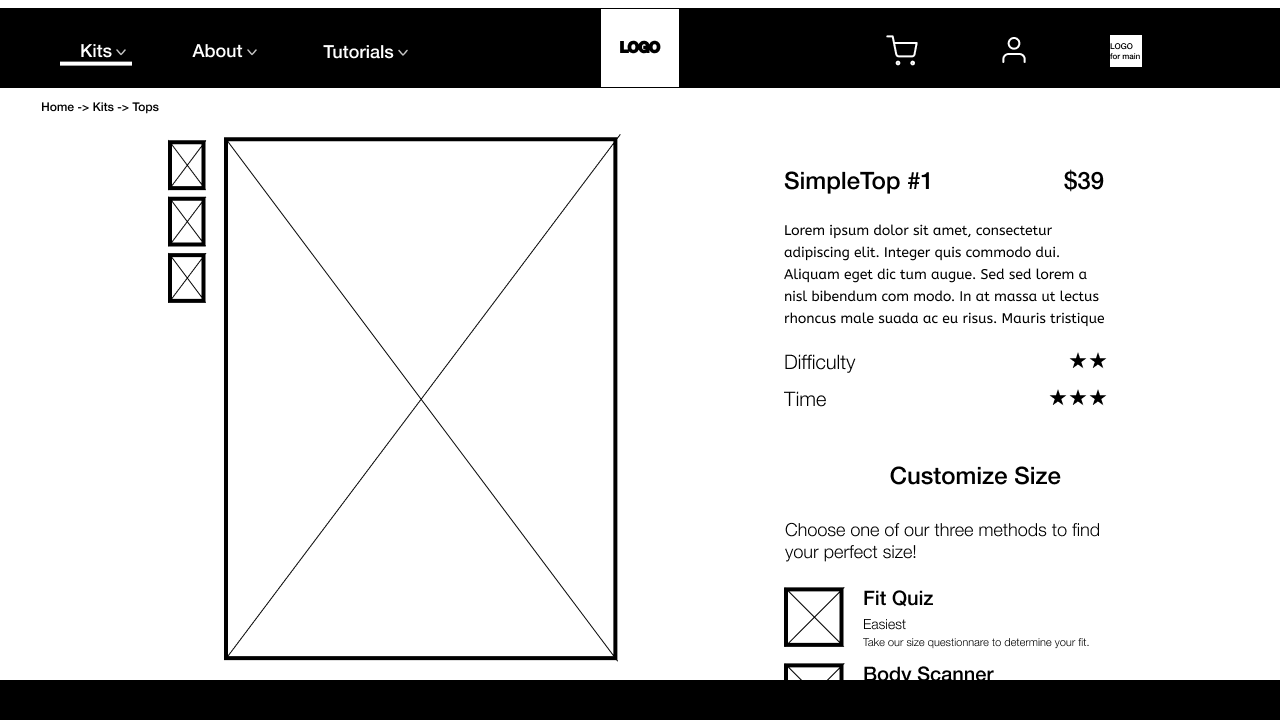Mosaic by Novoloom
Senior Capstone Award Recipient, 2021

Role
Visual Design Lead, UX Design, Packaging Design
Duration
16 weeks
Tools
Adobe Ilustrator, Photoshop, Premiere Pro, Figma, Framer X, Miro
The Problem
Traditional garment making processes have a high learning curve, requires specialized knowledge and expensive equipment.The Solution
Mosaic is a brand of ready-to-sew clothing kits that empowers people of all skill levels to create their own custom clothing.
Our Users



How might we make diy clothing practices more approachable, easy to learn, inclusive, and transparent?

Research Methods
- Secondary user research
- 15 User interviews
- 2 Rounds of digital usability testing
- 2 Rounds of physical kit usability testing
- Secondary brand research

Initial Prototype & Testing
After solidifying our target users as well as our design requirements we moved into initial design phases of the digital interface, physical kit experience, and the Mosaic brand. We conducted user testing on our digital interface and internal user testing of our physical kit.







Key Findings
Digital Interface
- Customization process on website
was most difficult to navigate &
most confusing
- Users wanted to see; be able to visualize things (3D clothing model)
Physical Interface
- Sewing process and instruction is easier to understand with pictures, videos, and text
- Numbers and letters on individual fabric pieces were too small
- Curves were difficult to sew for novice sewers on our bucket hat
- Mosaic is not suitable for kids - company would need to conduct further research to develop a brand variation
 View Usability Testing Analysis Here
View Usability Testing Analysis Here
Mosaic Brand Book
We utilized feedback from our user tests conducted on both our low-fidelity digital and physical prototypes to iterate on our brand book. We also incorporated additional secondary research findings to inform the language used by Mosaic by establishing the brand’s personality. The brand book includes a full identity for Mosaic, including logos, a color palette, typography hierarchy, physical kit packaging, and supplementary branding materials and applications.






Instruction Book
We improved the clarity, accessibility, and enjoyability of our instruction manual. We were able to usability test our instructions with members of Generation-Z (our core target audience) between the ages of 12 and 22. Through this, we were able to improve our diction, layout, typography, images, and overall approach to educating our user.
View Full Instructions Here
Kit Packaging
We made around 8 virtual mailer mockups on Packlane, physically printed two paper prototypes (one miniature and one actual size), and ordered around 15 polished final prototypes to run real world A/B tests. Along with designing the mailer, we also designed inner packaging (e.g. dividers to separate the tools and materials), gift cards, and labels for tools. Below is our final packaging iteration.

Kit Contents
We received feedback on what threads were most usable for hand sewing, which sewing tools and accessories added the most value to the experience, and what fabrics were most beginner-friendly to sew with. We implemented this feedback into our final version of our DIY bucket hat kits.
Digital Interface
Our Hi-Fi Prototype allows us to replicate the process of ordering and customizing our ready-to-sew clothing kits. Our decision to use Framer enabled us to prototype complex interactions, such as data entry for measurements and integrating 3-D models into our prototype to ascertain how users would respond. View Interactive Prototype Here
View Interactive Prototype HereCapstone Video
